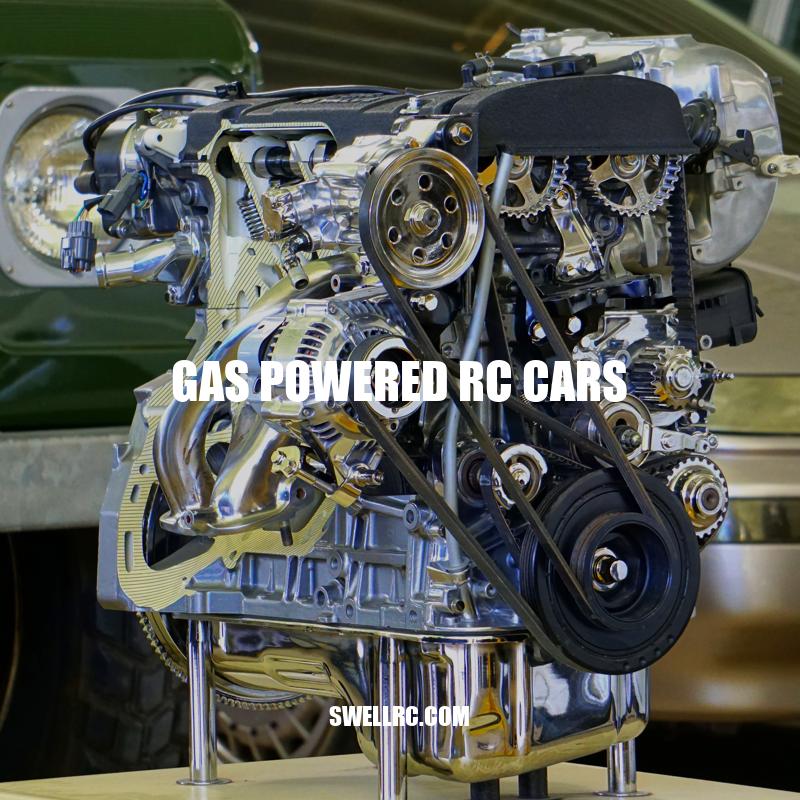Gas Powered RC Cars: A Comprehensive Guide
For enthusiasts of remote control cars, gas powered RC cars and nitro RC cars offer an exhilarating experience. These high-performance vehicles provide a realistic driving experience, longer run times, and faster speeds compared to electric RC cars. With various types of gas powered RC cars available, including on-road, off-road, and drift cars, hobbyists can choose the perfect model to suit their racing style and terrain.
Whether you’re a seasoned pro or just starting out, gas powered RC cars offer a thrilling way to enjoy the hobby.
Benefits of Gas Powered RC Cars
Gas powered RC cars offer several benefits that make them a popular choice among hobbyists. Some of the key advantages of gas powered RC cars include:
- Longer Run Times: Gas powered RC cars can run for hours on a single tank of fuel, making them ideal for extended racing sessions.
- Faster Speeds: Gas powered RC cars are generally faster than electric RC cars, with some models reaching speeds of over 50mph.
- More Realistic Experience: The sound and feel of a gas powered engine can provide a more immersive experience for hobbyists.
Here’s a comparison table highlighting the benefits of gas powered RC cars:
| Feature | Gas Powered RC Cars | Electric RC Cars |
|---|---|---|
| Run Time | Several hours | 30 minutes to 1 hour |
| Speed | Up to 50mph | Up to 30mph |
| Realism | More realistic engine sound and feel | Less realistic |
By understanding the advantages of gas powered RC cars, hobbyists can make informed decisions when choosing a model that suits their needs.
Types of Gas Powered RC Cars
Gas powered RC cars come in various types, each designed for specific racing styles and terrains. The main gas powered RC car types include:
- On-Road Cars: Designed for speed and precision on smooth surfaces, these cars are perfect for racing on paved tracks.
- Off-Road Cars: Built for rugged terrain, these cars feature larger wheels and suspension systems to absorb shocks and maintain speed on uneven surfaces.
- Drift Cars: Specifically designed for drifting, these cars have unique setups and tires that allow for smooth, controlled slides.
Here’s a comparison table highlighting the key features of each gas powered RC car type:
| Type | Terrain | Speed |
|---|---|---|
| On-Road | Paved tracks | High |
| Off-Road | Rugged terrain | Medium-High |
| Drift | Smooth surfaces | Medium |
By understanding the different gas powered RC car types, hobbyists can choose the right model for their racing style and terrain.
Choosing the Right Gas Powered RC Car
When choosing a gas powered RC car, there are several factors to consider to ensure you find the right model for your needs. Here are some key considerations:
- Engine Type: Decide between 2-stroke and 4-stroke engines, each offering unique benefits in terms of power and efficiency.
- Durability: Consider the car’s build quality, materials, and suspension system to ensure it can withstand rough handling and crashes.
- Speed: Think about the speed capabilities of the car and whether it meets your needs.
- Skill Level: Choose a car that’s suitable for your experience level, whether you’re a beginner or an experienced hobbyist.
Here’s a comparison table to help you choose the right gas powered RC car:
| Factor | Beginner | Advanced |
|---|---|---|
| Engine Type | 2-stroke | 4-stroke |
| Durability | Basic suspension | Advanced suspension |
| Speed | Up to 30mph | Up to 50mph |
By considering these factors, you can find the perfect gas powered RC car for your needs and enjoy a more satisfying hobby experience.
Maintenance and Safety Tips
To ensure the longevity and performance of your gas powered RC car, regular maintenance is crucial. Here are some key tips:
- Regular Cleaning: Clean the car’s exterior and interior, paying attention to the engine, suspension, and other critical components.
- Engine Maintenance: Regularly check and maintain the engine’s air filter, fuel system, and glow plug.
- Fuel Management: Use the correct fuel type and ratio, and store fuel properly to prevent contamination and degradation.
Safety precautions are also essential when operating nitro RC cars. Always:
- Wear Protective Gear: Wear safety glasses, gloves, and a long-sleeved shirt to protect yourself from potential hazards.
- Operate in a Safe Area: Choose a well-ventilated, open area free from obstacles and flammable materials.
By following these gas powered RC car maintenance and safety tips, you can enjoy a safe and enjoyable hobby experience.
Frequently Asked Questions
Find answers to common questions about gas powered RC cars, including:
- What is the difference between gas and nitro RC cars? Gas powered RC cars use gasoline or a gas-oil mixture, while nitro RC cars use nitromethane-based fuel.
- How do I maintain my gas powered RC car? Regularly clean and check the engine, fuel system, and other critical components.
- Why won’t my gas powered RC car start? Check the fuel system, ignition, and engine for potential issues.
More FAQs:
| Question | Answer |
|---|---|
| How long do gas powered RC cars run? | Several hours, depending on fuel capacity and engine efficiency. |
| Can I use any fuel in my gas powered RC car? | No, use the recommended fuel type and ratio to ensure optimal performance and longevity. |
By understanding the answers to these common gas powered RC car FAQs, you’ll be better equipped to troubleshoot and maintain your RC car.
In Conclusion
Gas powered RC cars offer an exhilarating experience for enthusiasts of remote control racing.
With their high-performance capabilities, longer run times, and faster speeds, these vehicles provide a more realistic driving experience compared to electric RC cars.
Whether you’re a seasoned pro or just starting out, understanding the benefits and types of gas powered RC cars can help you make informed decisions when choosing a model that suits your needs.
By considering factors such as engine type, durability, speed, and skill level, you can find the perfect gas powered RC car for your hobby experience.
Regular maintenance and safety precautions are also crucial to ensure the longevity and performance of your vehicle.
As you embark on this exciting hobby, remember to stay safe, have fun, and explore the many resources available to help you improve your skills and knowledge.
Whether you’re a seasoned enthusiast or just starting out, gas powered RC cars offer an unparalleled level of excitement and challenge that’s sure to keep you engaged for hours on end.
So why not get started today? Share your experiences, ask questions, and join the community of enthusiasts who are passionate about remote control racing.


